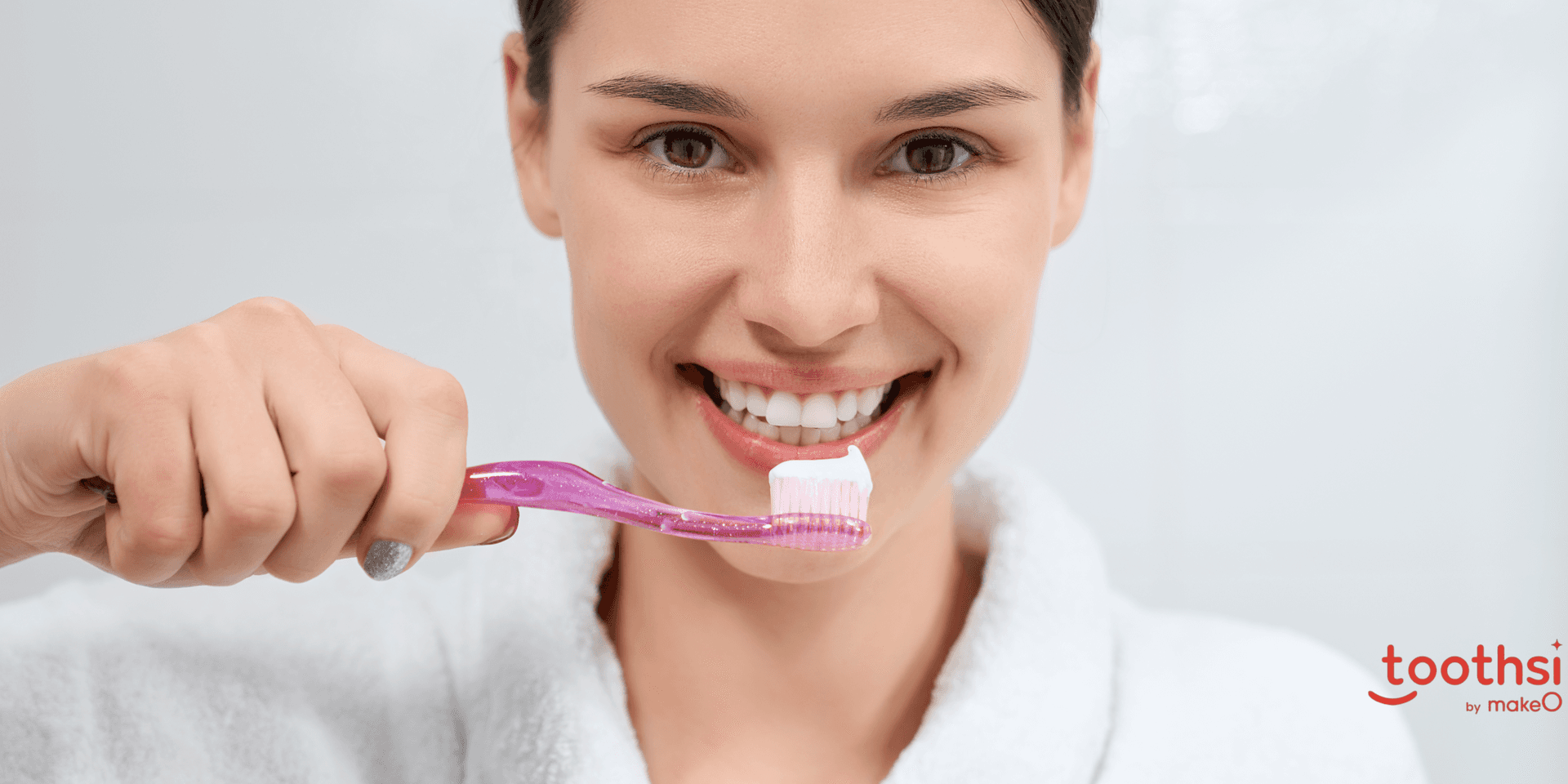MakeO blog
Fluoride is a mineral widely recognized for its significant role in maintaining dental health, particularly in the prevention of tooth decay. Commonly found in sodium fluoride toothpaste and drinking water, fluoride is also naturally present in our environment, though typically consumed in small amounts. Our primary exposure to fluoride comes through diet, respiration, and fluoride supplements, with fluoridated water being the most prominent dietary source. While fluoride is essential for cavity prevention, many people are curious about its other potential benefits. Does fluoride whiten teeth or why is it added to toothpastes - these are some common questions that arise when talking about fluoride. To address these, we’ll discuss in detail about the benefits of fluoride, its role in teeth whitening and how it contributes to a brighter smile.
Why Is Fluoride Added to Toothpaste?
Fluoride is an important ingredient in toothpaste because it helps protect our teeth from decay. Here's how it works:
Preventing Tooth Damage: When we eat, bacteria in our mouth produce acids that can harm our teeth. Naf Sodium fluoride strengthens the enamel (the hard outer layer of the teeth), making it more resistant to these acids.
Repairing Early Damage: Sometimes, tiny areas on our teeth can start to weaken or get small spots of damage. Fluoride helps fix these early problems by bringing back important minerals like calcium and phosphate to the outer layer of the teeth. This helps repair and strengthen the teeth, making them better at withstanding future acid attacks.
Fighting Harmful Bacteria: Fluoride also helps fight the bacteria that cause tooth decay. It makes the environment inside these bacteria less friendly, which slows down their ability to produce harmful acids.
Sodium fluoride dental paste has been proven to reduce cavities by up to 30%. Most effective toothpastes contain 1,000-1,100 ppm of fluoride, which effectively prevents decay while minimising the risk of excess fluoride, which can lead to discolouration of teeth. Balancing fluoride content is key to promoting oral health.
Does It Help Whiten Teeth?
Fluoride primarily protects teeth from decay and strengthens enamel, but it does not directly whiten teeth. By maintaining strong enamel, fluoride helps prevent issues that could lead to discolouration, such as erosion or decay. When enamel becomes thin due to various factors, teeth can become more vulnerable to stains and sensitivity, which may cause discolouration. Fluoride helps reinforce enamel, making it more resistant to these problems and helping to avoid yellowing.
For visible whitening, sodium fluoride toothpaste is often combined with additional whitening agents like hydrogen peroxide or activated charcoal. These ingredients work together to break down surface stains and improve tooth colour. While fluoride supports overall dental health and helps prevent discolouration, whitening toothpastes use these extra ingredients to actively target and remove stains.
Thus, fluoride contributes to a healthy and strong enamel, which helps prevent discolouration. But for effective teeth whitening, it's best to use toothpastes that combine fluoride with specialized whitening agents.
Teeth Whitening Home Kits
Teeth whitening home kits are a popular choice for those looking to brighten their smile from the comfort of their own home. These often contain ingredients like hydrogen peroxide or carbamide peroxide, known for their ability to remove stains and whiten teeth. These peroxides work by penetrating the enamel to break down stains, but they can sometimes lead to tooth sensitivity or enamel weakening.
In recent years, newer whitening agents have emerged, such as phthalimidoperoxycaproic acid (PAP). Unlike traditional whitening agents, PAP does not cause sensitivity or weaken teeth, making it a suitable choice for individuals concerned about discomfort.
PAP-based treatments often include extra ingredients like nano-hydroxyapatite and potassium citrate, which make the treatment safer and more effective. The addition of nano-hydroxyapatite (a nano-particle form of apatite) and potassium citrate provides extra benefits during the whitening process, including strengthening the enamel and reducing existing tooth sensitivity. Moreover, modern whitening kits often feature blue LED lights that boost the performance of the whitening gel, allowing for quicker and more efficient results. However, only a few manufacturers have incorporated these ingredients and technologies in their teeth whitening products yet.
If you’re looking for a convenient and advanced whitening experience, consider the makeO toothsi 2nd Generation Teeth Whitening Kit. Featuring innovative PAP technology and a portable mouthpiece with blue LED light, this kit allows you to achieve a whiter smile anytime and anywhere. Order now to receive it within 7-10 days.
Conclusion
Fluoride is essential for preventing tooth decay and strengthening enamel, but it is not directly involved in teeth whitening. Its primary role is to enhance dental health by making enamel more resistant to damage and discolouration. For visible whitening, you can use toothpaste that combines sodium fluoride with additional whitening agents. Teeth whitening home kits, which often include gentle ingredients like PAP and advanced features like blue LED light, also offer an effective way to brighten your smile at home.
related categories
Related articles

Types of Braces: Removable vs Fixed Braces, Which is Right For You?

This Diwali, Smile Bright With makeO Teeth Whitening Kit

Dr. Pravin Shetty: Pioneer in Lingual Orthodontics & Innovative Smile Solutions
How do I Know I’m the Right Candidate for makeO toothsi Teeth Aligners?

